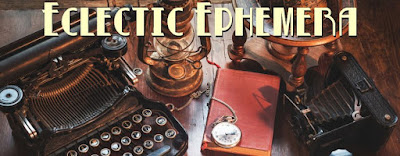Well, this is something I never thought I'd be blogging about. Not that I'm an expert on such things as dolls, you understand (although while we're at it, who else remember Sindy?). Anyway, this is more a case of the subject within a subject being of interest (hopefully!) to my readers, with the news that Mattel, maker of the Barbie doll, has honoured one of the pioneers of early aviation with the latest addition to their range.
 |
| source - Wikimedia Commons |
The aviatrix in question is Elizabeth "Bessie" Coleman, who made history in 1921 when she became the first black person to obtain an international pilot's licence. Her story is one that frankly deserves more recognition and I can only hope that this acknowledgement by Mattel goes some way towards achieving that.
Born in Atlanta, Texas in 1892 Bessie Coleman seemed all set to follow in her parents' footsteps as a cotton picker. However from an early age she proved to be an academic student, fond of reading and a whizz at maths, such that she was given a scholarship by the local Baptist church that eventually enabled her to attend what is now the Langston University in Oklahoma. The money did not last, though, and she was only able to complete a single term before she was forced to return to Texas.
 |
| source - Wikimedia Commons/NASA |
 |
| Bessie and a Pathé cameraman during a visit to Berlin in 1925 source - New York Public Library |
Despite widespread media attention in America at her achievement, Bessie was quick to realise that if she were to make a living as a civilian pilot in her home country then barnstorming was pretty much the only way to go. Again showing remarkable prudence Coleman, still having found no-one in the U.S. willing to teach her the advanced flying skills she would need, returned to France to undertake further lessons. Touring Europe she met famous Dutch aircraft designer Anthony Fokker and visited his factory in Germany where she was given more training by the chief test pilot. Now fully versed in all aspects of advanced flight, she once again returned to the U.S.A. where, billed as "Queen Bess", she wowed crowds around the country in various Curtiss JN-4 "Jenny" biplanes - earning her the well-deserved title of "The World's Greatest Woman Flier". Resolute in her desire to perform the most difficult stunts and understandably vocal in promoting African-American aviation she toured the country for the next 4 years giving lectures and exhibition flights. During a visit to Orlando, Florida she befriended a local vicar and his wife, who all but adopted her as a daughter; remaining in Orlando Bessie opened her own beauty parlour with the aim of making enough money to buy her own aeroplane.
 |
| Bessie and one of her Curtiss JN-4's, c.1922 source - Wikimedia Commons |
In April 1926 this she finally did, purchasing another Curtiss JN-4 in Dallas, Texas. Sadly, however, it was this aircraft that would be her downfall. Bessie was in Jacksonville, Florida, at the time of the purchase so the aeroplane was flown back from Dallas by her 24-year-old mechanic and publicity agent William D. Wills. He was reportedly forced to land three times along the journey due to the terrible condition the aircraft had been kept in by its previous owner. Despite its obviously dangerous shortcomings and against all the advice of friends and relatives, Bessie went up (as a passenger) in the Jenny with Wills on the 30th April 1926 to practice for a parachute jump she intended to perform the following day. At 3,000ft the aircraft suddenly went into an uncontrollable dive and spun into the ground. Bessie was thrown from the cockpit and sadly died on the ground; Wills was also killed instantly when the Jenny impacted the ground and exploded. Detailed examination of the wreckage subsequently revealed a wrench for maintaining the engine had been left in the machine, causing the controls to jam.
Bessie Coleman's tragically early death at the age of 34 was, despite her undoubted fame, largely ignored by all but the African-American press. In spite of this, over ten thousand mourners turned out for her funeral in Chicago and over the many years following she was honoured with several roads, schools and other public buildings being named after her, to say nothing of various museum exhibits, commemorative stamps etc.
 |
| Bessie in a Chicago press photo, 1925 source - New York Public Library |
Now can be added to that list a Barbie doll designed in her image (I have to admit not seeing much of a likeness, although as I said at the top of this post dolls are not really my metier), with a snappy-looking aviatrix get-up featuring flying suit, boots and initialled cap. It is splendid to see such a previously-overlooked trailblazer of (black) women's aviation marked in this way and I commend Mattel for choosing to highlight this historically important woman. If it can also encourage young girls of any colour to take an interest in STEM (Science, Technology, Engineering & Mathematics) Learning and aviation in particular, then so much the better.

Sad end to a talented young lady.
ReplyDeleteGood to see she will get a Barbie and hopefully become better known.